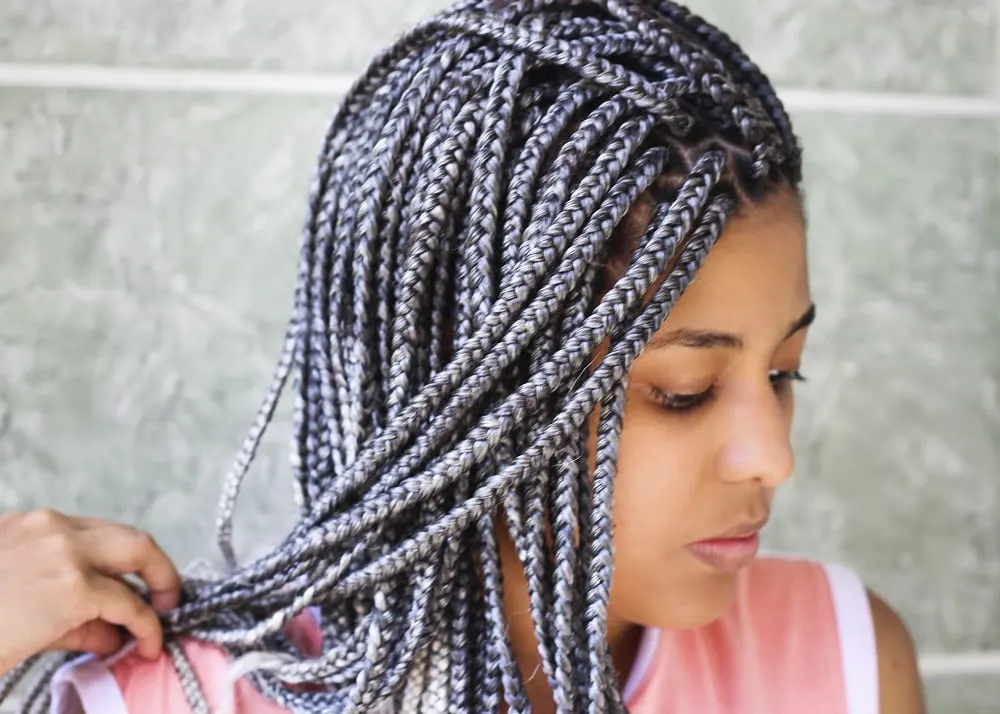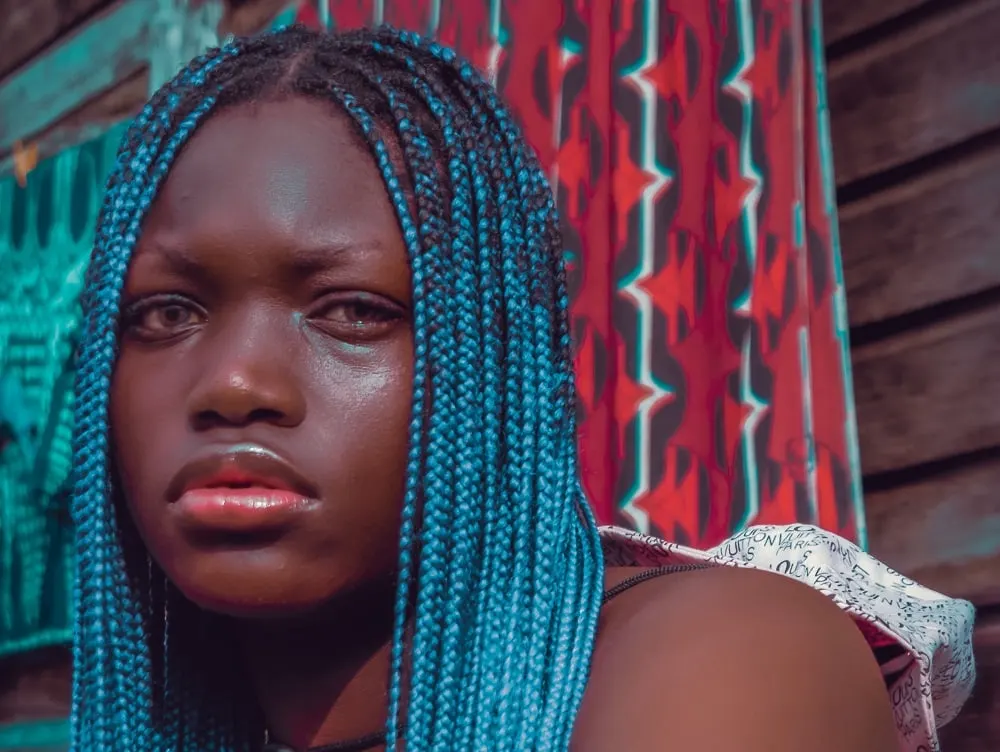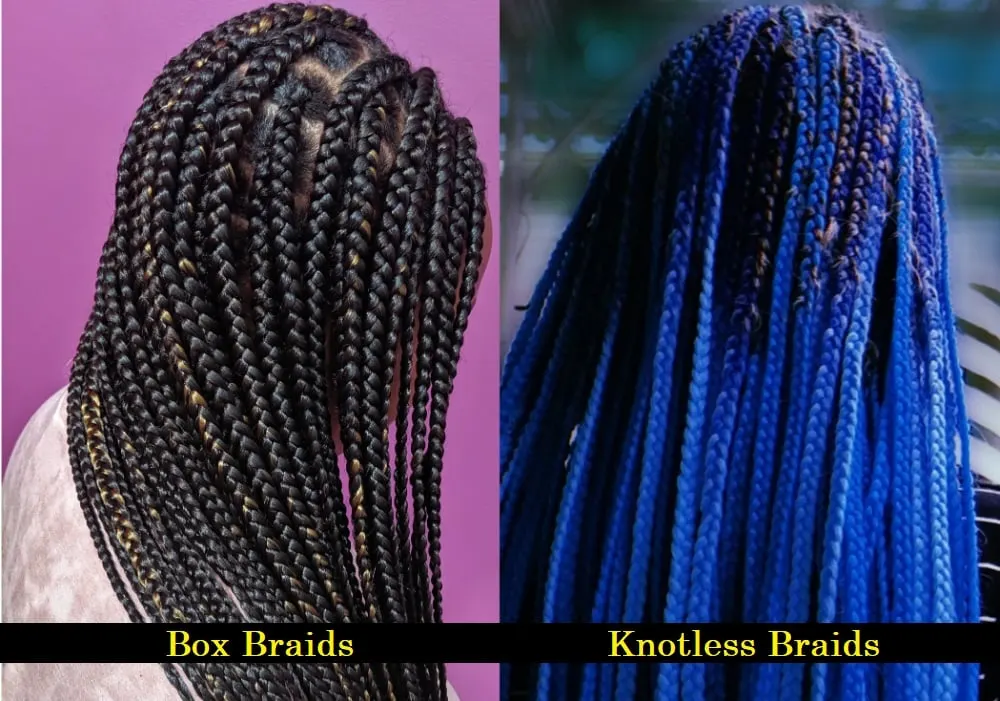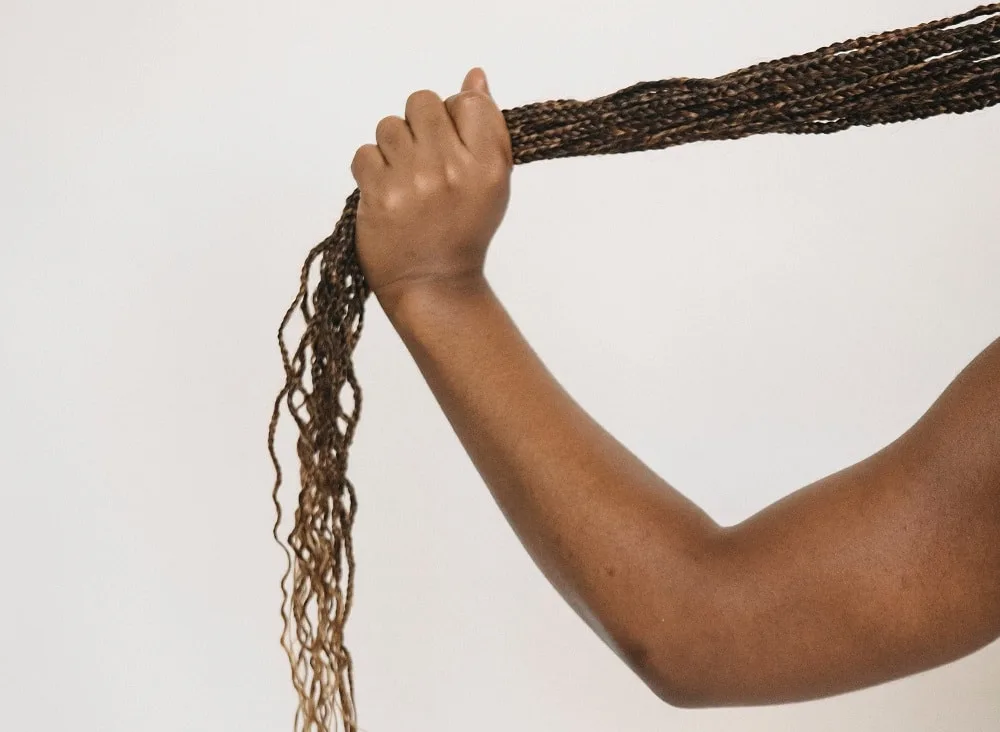Knotless and box braids are two of the most popular braids worn by braid lovers. If you love braids but are confused about the difference between traditional box braids and knotless braids, let’s explore these two braiding techniques and understand the difference!
Both styles are single braids, and the size is by your choice, from jumbo or super large boxes up to very small or even micro ones. They can be thick or thin. The length as well, they can be as short as your little finger or you can drag them on the floor.
Both of them are usually made together with synthetic hair added. They aren’t continuously attached to your scalp, so you can style them however you want. You can wash them, sleep with them, and keep them for up to two months.
Then what’re the key differences between regular box braids and knotless box braids? Let’s get closer to each of the styles and find out.
Regular Box Braids

Installing regular or traditional box braids starts by wrapping a piece of hair extension around the root of each braid. That represents the knot, brings all the hairs from a box together, and makes the base tight.
The braiding technique after the start is classic: three strands of hair knead the braid until the end of the hair (hair extension). The ends are sealed with hot water or fire.
- How Much Do Box Braids Cost?
- How to Maintain Box Braids?
- How to Wash Box Braids?
- How to Part Hair for Box Braids?
Knotless Box Braids

Knotless braids usually start with a classic three-stand knit of the natural hair, and the synthetic hair feeds in by adding several pieces among braiding.
However, they can also be installed by mixing the whole synthetic hair with the natural one at the root, coming together in a three-stand knit from the beginning.
The braids start exactly where the stands naturally come together in a braid without being excessively tightened, and they shouldn’t be loose, either.
Differences Between Regular Box Braids and Knotless Braids

The only difference between regular and knotless box braids is at the root.
Regular box braids are braided with extensions that are secured to the roots with a knot. On the other hand, Knotless box braids are created without a knot, resulting in a more natural-looking and less bulky braid that is gentler on the scalp.
Pain
The first one you can notice is the pain during the installation process. Traditional box braids can hurt while installing, more or less depending on how much the braider is going to tighten the knot. In some cases, they even offer painkiller pills.
It might be a solution for you to keep on until the end, but in the end, you’ll need to suffer for at least several more days. You’re more likely to have difficulties while sleeping, moving your head, manipulating your braided hair, touching it, and so on. Until they get loose, you can lose a lot of your hair.
Box braids will only work if your hair and scalp skin is strong.
If you have a sensitive scalp and hair, you should opt for knotless braids, as there is no pain, neither when they’re installed nor after. They are more flexible since the beginning. So usually, you only feel the weight of your braids and maybe a little bit of tension at the most sensitive parts of your scalp. The chances of damaging your hair are also considerably reduced.
The Look

Traditional box braids look thicker at the root than knotless braids. When the extensions of knotless braids feed in gradually, the difference is really noticeable.
Knotless braids look more natural at the root. They’re usually flat on the head, unlike the regular box braids, which seem more voluminous at the root.
Depending on the braiders, but I’ve seen some examples, some can make knotless braids look scalpy. The geometry of the paths and how to mix the extension according to each particular head are important to get a full look.
Box braids can also look bad if the geometry isn’t the best. Moreover, box braids can come packed with face lifting (unwanted smiles and surprised eyebrows). You can get that too on knotless braids if you grab your braids up in a ponytail or bun.
Anyway, I’d recommend natural smiles, and if you’re looking for a bit of a lifting look, you don’t have to wear a very tight style, just lift your side braids up.
Maintaining
Depending on each individual’s hair, and how it has been braided, knotless braids can get frizzy and loose quicker than regular box braids, as the hair on the scalp is a bit more exposed.
Anyway, it is easier to clean and style knotless braids in the first weeks, as they are more flexible. There are useful tips and tricks for both styles to keep them looking neat and clean.
Costs
Generally, knotless box braids tend to be more expensive than regular box braids. They’re due to the technique used and the amount of time it takes to install.
No matter they are regular or knotless box braids, the price would always vary depending on the number of braids you opt for, their size, length, thickness, geographical area, and the hairstylist’s experience.
However, when the hair extension of knotless box braids is gradually fed in, the price and working time would increase.
Box Braids Vs. Knotless Braids At A Glance
Below is a box braid vs knotless braid comparison table showing the differences we’ve discussed:
| Regular Box Braids | Knotless box braids |
|---|---|
| Extension wrapped around the base of each braid. | Classic braiding since the beginning. The synthetic hair can feed in gradually. |
| Tighten roots that can be painful & harmful. Hard to manipulate in the first days. | Painless & can be styled from the beginning. |
| Thick look | Natural & flat look |
| Can look neat for more time | Can get frizzy quicker |
| Usually expensive | Usually more expensive than regular box braids due to the amount of time and skill required |
| Can take several hours to install | Takes less time to install than box braids |
| Limited styling options due to thickness and weight | More versatile styling options, lighter weight |
| Can be heavy and uncomfortable | More comfortable than regular box braids due to lighter weight |
Similarities Between Box Braids and Knotless Braids

Everything except for the root is the same between regular box braids and knotless ones. When knotless braids are made with all the synthetic hair added since the beginning of the braid, it’s very hard to make the difference between the two styles. This is because they are also thick at the root as box braids are, but just a little bit flatter.
So, Regular Box Braids or Knotless Braids?
Box braids and knotless braids are very similar styles. If you do it for the first time, it’s better for you to try knotless braids so you can prevent having a painful experience and damaging your hair.
If you are used to these styles and you have no problems wearing tight hairdos, go for regular braids.
It’s just a matter of preference. Enjoy your braids, and take care of your beautiful hair!
FAQs
Knotless braids are less tense at the root, so fewer hair and scalp damage risks are involved.
Both styles can last up to two months with proper installation and maintenance.
Yes. Getting overly tight knotless braids is possible, but that’s rare. The chance is much less than getting excessively tight box braids. Also, tight knotless braids would always be less tensed than tight box braids.
Communicate properly with the braider. Ask him/her to braid all the synthetic hair together at the root but without any knots. Also, browse some knotless braids pictures and show them.
